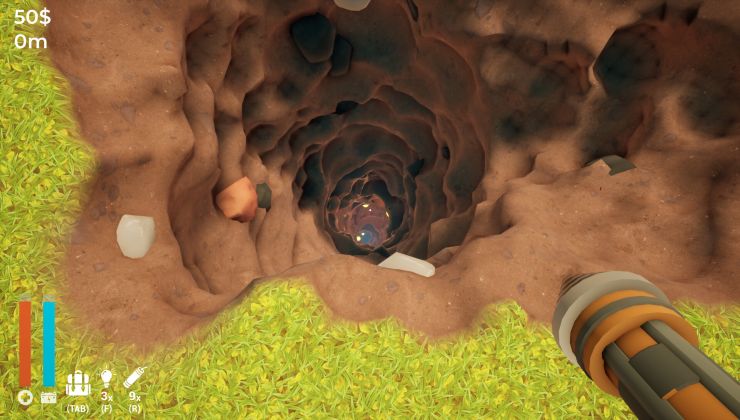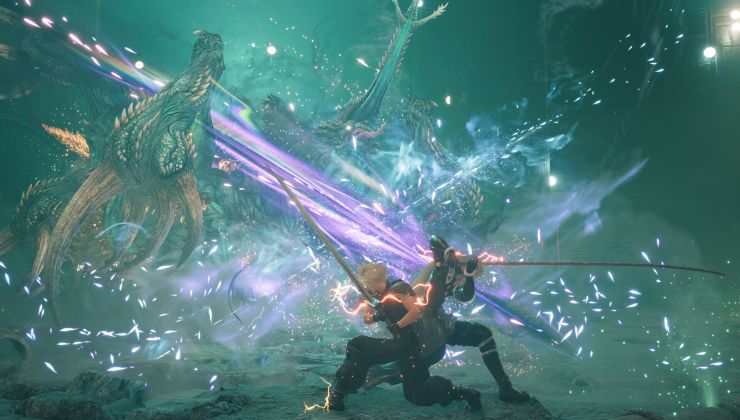Most of us reading this site want Steam Machines to do well. Not all of us will be interested in buying the hardware, but we're aware that its success is also tied to the success of Linux as a gaming platform, which is why I'm pretty miffed that the OEMs and Valve have messed it up.
Valve have done well with the controller and with making SteamOS pretty coherent and user-friendly, but messed it up when it came to defining what a Steam Machine actually is, leaving it open to interpretation. I've said this time and time again, but the original Steam Machines line-up was a complete mess. We had everything from $1500 PCs to ludicrously overpriced machines which didn't even have discreet graphics cards.
Even the best offerings fall short. Alienware's cheapest offering comes in at $450 (this should be the ideal price point in my opinion), but offers a mere 4GB RAM. If you want to scale this up to 8GB, you have to pay $750 since it also means upping the CPU to an i5. Does a GTX 960 need an i5 to do its thing? No, not really. You might get a few extra frames or do better in a more CPU-intensive game, but if one tries to step outside the worldview of a PC gamer and into one of a console gamer, then it doesn't take long to realise that those $200 aren't worth it, but $20 for an extra stick of 4GB RAM would be worth it.
This is perhaps the most frustrating thing. Most of the time, the specs are completely wrong, but when they're not then the price is a serious problem. An Intel i3 and Nvidia 960/1060 series (or AMD equivalent) are the perfect mass market specs for a sofa 1080p gamer just coming off a console. Someone with more needs than that will know how to build a PC and will do it cheaper and better than an OEM.
With the GTX1060 coming out, estimated to have a performance somewhere between a 970 and 980 (probably more on the side of a 980, but I like being conservative) at $250, and if AMD's Zen architecture lives up to the hype and delivers the same price/performance ratio benefits that the Piledriver architecture did, then we could be looking at a new era for the Steam Machine if things are done right this time round.
So what should be done right? First and foremost, deliver the best performance at the lowest cost possible. There is absolutely no room for diminishing returns here, which is why I can't advocate i7s or even i5s. Upgradability would also be a nice plus and a huge selling point if it's approached in a way where a non-technically minded user can get an upgrade easily through using modular designs (there's a lot of possibilities here, but too much to go into for this article). This has the potential to be a massive selling point over this last console generation, which was underpowered on release.
The second, and perhaps more controversial, point is that Valve should really take a few lessons from the console world. By this I mean manufacturing their own machine (which doesn't mean exclusivity). While the idea of everyone building their own box is amicable, the disadvantages far outweigh the benefits. This is what makes consoles so competitive, gives them (historically, not this last generation) great performance compared to PCs on launch at a much better price, with a considerable lifespan.
There's a few reasons for this. Firstly, there's economies of scale, with a single manufacturer pumping out tonnes of machines, the production costs are lower for a number of reasons which this article won't touch upon. Secondly, the benefits of optimisation are tremendous. If everyone is developing for the same hardware, it's easy to accommodate for and optimise a game to get the most out of that hardware - this is one of the main reasons why consoles have such a long lifespan, considering this optimisation also gets better with time. The third reason is simply a retail one, since a high street vendor is far more likely to stock Steam Machines if there's only one option, again for a number of reasons. There's probably more, such as the ability to sell hardware at a loss or a significantly lower profit margin (since that money is made back through game sales), but those are the main ones.
In essence, for Steam Machines to succeed, I would like to see something priced at just over $400 (might be a bit optimistic, but possible with lower profit margins) made by Valve and at those sweet spot specs I mentioned earlier. The original launch was very underwhelming, but there's still a lot of potential to turn things around significantly if Valve come to their senses. Even without them making their own hardware, there's still room for OEMs to improve a lot.
Valve have done well with the controller and with making SteamOS pretty coherent and user-friendly, but messed it up when it came to defining what a Steam Machine actually is, leaving it open to interpretation. I've said this time and time again, but the original Steam Machines line-up was a complete mess. We had everything from $1500 PCs to ludicrously overpriced machines which didn't even have discreet graphics cards.
Even the best offerings fall short. Alienware's cheapest offering comes in at $450 (this should be the ideal price point in my opinion), but offers a mere 4GB RAM. If you want to scale this up to 8GB, you have to pay $750 since it also means upping the CPU to an i5. Does a GTX 960 need an i5 to do its thing? No, not really. You might get a few extra frames or do better in a more CPU-intensive game, but if one tries to step outside the worldview of a PC gamer and into one of a console gamer, then it doesn't take long to realise that those $200 aren't worth it, but $20 for an extra stick of 4GB RAM would be worth it.
This is perhaps the most frustrating thing. Most of the time, the specs are completely wrong, but when they're not then the price is a serious problem. An Intel i3 and Nvidia 960/1060 series (or AMD equivalent) are the perfect mass market specs for a sofa 1080p gamer just coming off a console. Someone with more needs than that will know how to build a PC and will do it cheaper and better than an OEM.
With the GTX1060 coming out, estimated to have a performance somewhere between a 970 and 980 (probably more on the side of a 980, but I like being conservative) at $250, and if AMD's Zen architecture lives up to the hype and delivers the same price/performance ratio benefits that the Piledriver architecture did, then we could be looking at a new era for the Steam Machine if things are done right this time round.
So what should be done right? First and foremost, deliver the best performance at the lowest cost possible. There is absolutely no room for diminishing returns here, which is why I can't advocate i7s or even i5s. Upgradability would also be a nice plus and a huge selling point if it's approached in a way where a non-technically minded user can get an upgrade easily through using modular designs (there's a lot of possibilities here, but too much to go into for this article). This has the potential to be a massive selling point over this last console generation, which was underpowered on release.
The second, and perhaps more controversial, point is that Valve should really take a few lessons from the console world. By this I mean manufacturing their own machine (which doesn't mean exclusivity). While the idea of everyone building their own box is amicable, the disadvantages far outweigh the benefits. This is what makes consoles so competitive, gives them (historically, not this last generation) great performance compared to PCs on launch at a much better price, with a considerable lifespan.
There's a few reasons for this. Firstly, there's economies of scale, with a single manufacturer pumping out tonnes of machines, the production costs are lower for a number of reasons which this article won't touch upon. Secondly, the benefits of optimisation are tremendous. If everyone is developing for the same hardware, it's easy to accommodate for and optimise a game to get the most out of that hardware - this is one of the main reasons why consoles have such a long lifespan, considering this optimisation also gets better with time. The third reason is simply a retail one, since a high street vendor is far more likely to stock Steam Machines if there's only one option, again for a number of reasons. There's probably more, such as the ability to sell hardware at a loss or a significantly lower profit margin (since that money is made back through game sales), but those are the main ones.
In essence, for Steam Machines to succeed, I would like to see something priced at just over $400 (might be a bit optimistic, but possible with lower profit margins) made by Valve and at those sweet spot specs I mentioned earlier. The original launch was very underwhelming, but there's still a lot of potential to turn things around significantly if Valve come to their senses. Even without them making their own hardware, there's still room for OEMs to improve a lot.
Some you may have missed, popular articles from the last month:
All posts need to follow our rules. For users logged in: please hit the Report Flag icon on any post that breaks the rules or contains illegal / harmful content. Guest readers can email us for any issues.




 How to set, change and reset your SteamOS / Steam Deck desktop sudo password
How to set, change and reset your SteamOS / Steam Deck desktop sudo password How to set up Decky Loader on Steam Deck / SteamOS for easy plugins
How to set up Decky Loader on Steam Deck / SteamOS for easy plugins
Just my opinion.
That both Alienware and Zotac went with the GTX960 OEM is likely no accident: It is probably the best GPU to choose in the current market.
I fully agree about CPU: An i3 fine. The i5 should be used for a top-end Steam Machine and an i7 in a Steam Machine is pure nonsense. It basically shows that Dell are a PC manufacturer and not very experienced in the game business.
Long story short: We need AMD. That don't have the fastest CPU is no concern, because they can offer a good enough CPU and GPU within the required budget.
It seems they have no plan for this. It's really frustrating to sit still and watch.
SteamOS/Linux needs more AAA titles though. The big failing point right now from a consumer pov is lack of games, even with the many games available already.
Yeah, you're right. It's something I was going to mention, but the article was long enough already. It's one of the advantages of the newer generations of hardware that they have less power draw and temperatures, but if they're making something really small then they would need some sort of custom heatsink for something like a 1060 I assume, probably with a blower design so the inside of the case doesn't get too hot.
Apparently, underclocking even slightly improves temperatures a lot, so that might be a good option as well.
Also, I think making a few exclusives good be very helpfull. Although I'm against them, they are what the customers want and maybe valve could reach a middle point were this exclusives come to the other platforms later on (like a year or so). Just as we are treated today with linux ports. At least until the steam machines gain some traction.
Besides all this, I'm starting to think that Valve is not fully invested in the steam machine project. Come on, they know better, they are Valve. Maybe, just maybe, all they want is just to scare windows to not try to steal they business.
Last edited by frcaton on 11 Jul 2016 at 2:30 pm UTC
The arguments about lack of games is a combination of quantity and quality. Don't get me wrong, it's neat for there to be hundreds or thousands of small indie games on Linux. However, when AAA titles are basically not being released for SteamOS (not to mention the absolute lack of any console sellers, which also killed the PS Vita), you have to realize that many gamers just aren't interested.
https://en.m.wikipedia.org/wiki/Mobile_PCI_Express_Module
Last edited by whitewolfguy on 11 Jul 2016 at 2:47 pm UTC
Last edited by natewardawg on 11 Jul 2016 at 3:02 pm UTC
This is also very much has to do with what people perceive. People complain about games like GTA and Skyrim not available on Linux, but apparently it is no problem that XCOM2, Kerbal Space program, or Cities: Skylines are not available on the Playstation 4. (Yes, KSP is planned, but we are playing it for years now on Linux). And these are serious, big games, that you can justify to call AAA.
Do we need more AAA games? Definately. Is the situation as bad as people make it? No, the situation is quite good actually compared to most platforms. The platform that does a better job is Windows, but you should not target Steam Machines at Windows gamers.
I don't think so, because multi-threaded rendering is a bottleneck of OpenGL and therefore of wrappers. The main advantage of the i7 over the i5 is hyperthreading, for which you need games with lots of threads.
In order to cut through translation layers you need high clock speeds, but the clock speeds of the i5 and also the i3 are just fine.
Looking at the future, where we will have less wrappers and more Vulkan, the case for an i7 doesn't get stronger.
Another piece of the puzzle would be some kind of benchmark built into Steam. Somewhat like the Windows Experience Index this KPI could be used to rank the different Steam Machine editions and would be added to every new release to the Steam shop.
It's something that really baffles me: the industry has failed to come up with some kind of globally accepted "will it run on my rig" system. Every piece of entertainment software should list its dependencies and requirements in a standardized matter, so a simple check app could tell you if your home equipment is capable to run anything you'd like to throw at it.
https://en.wiktionary.org/wiki/discreet
1. Respectful of privacy or secrecy; quiet; diplomatic.
2. Not drawing attention, anger or challenge; inconspicuous.
https://en.wiktionary.org/wiki/discrete
1. Separate; distinct; individual; non-continuous.
2. That can be perceived individually and not as connected to, or part of something else.
3.(electrical engineering) Having separate electronic components, such as individual resistors and inductors — the opposite of integrated circuitry.
...
The problem here is with Steam OS itself.
People are afraid of Linux! they have no idea of what it is, they don't want to learn new stuff and especially they think by default that Linux sucks (because they hear it, and believe so even if they didn't give Linux a single chance).
And actually Valve created even more unclarity to NON-Linux users with Steam OS. Pretty sure that a lot of people have no idea about Linux's distros let alone knowing that Steam OS is one of them.
In my opinion Alienware, Zotac, Valve & co should invest WAY MORE in promoting Linux/Steam OS and all the facts and good stuff around it.
They can easily sell definitely more machines just by advertising more about the fact that Linux is free, open source (which is a big plus), the extreme customizability, freedom of choice and also promoting some great software like WINE for Window$ compatibility (it's known that some stuff works better with it than with Win10)
Apple became a colossus by selling it's products with a huge promotional campaign, how many people do you guys know that own an Apple laptop or desktop even if they have no idea how a pc works and they buy Apple because it's the trend and use their beloved 2000€ crapple just to browse the web.
Also how many of your friends own a smartphone from a big company (e.g. LG, SAMSUNG, APPLE, etc) instead of owning a chinaphone from a well-renowed chinese brand (XIOMI, MEIZU, ONEPLUS) which basically provides the same specs and building quality for a 1/3 of the price... pretty sure is less than 10%..
By rewatching the Alienware promo video posted 4-5 post before i find incredible that the only lines about Steam OS (and Linux in general) are:
"and then you're right into Steam OS, with access to thousand of titles, over a hundred million users, mods and more"
that's it... and actually you can have the same "1000 titles, 100 million+ users, mods and more" on window$ too
the video doesn't mention about the great things that attract people to dual booting/switching to linux.
imagine if he said something like:
"and then you're right into Steam OS: forget about anti-virus and enjoy the extremely customizability [in the video showing some ultra-sick desktop configuration with conky and other stuff] and reliability of the OS made exclusively by Valve [in the video showing dota 2, hl2, portal cs:go] for GAMERS!!! with access to thousand of titles, enjoy the latest but also the old classics [showing some cult-classics running windowed with again a mega sick conky configuration monitoring all] straight on your couch, with 100 million users, mods and more"
this is just an example, but i really think that, even at the same price, they can improve their sales with better advertising
as for valve, they should really improve their Steam OS promotion, e.g. by putting a very visible icon/banner/something on top of their store, where who click can access to an easy and fast explanation to Linux/Steam OS
ps. all IMO of course
Last edited by manero666 on 11 Jul 2016 at 6:00 pm UTC